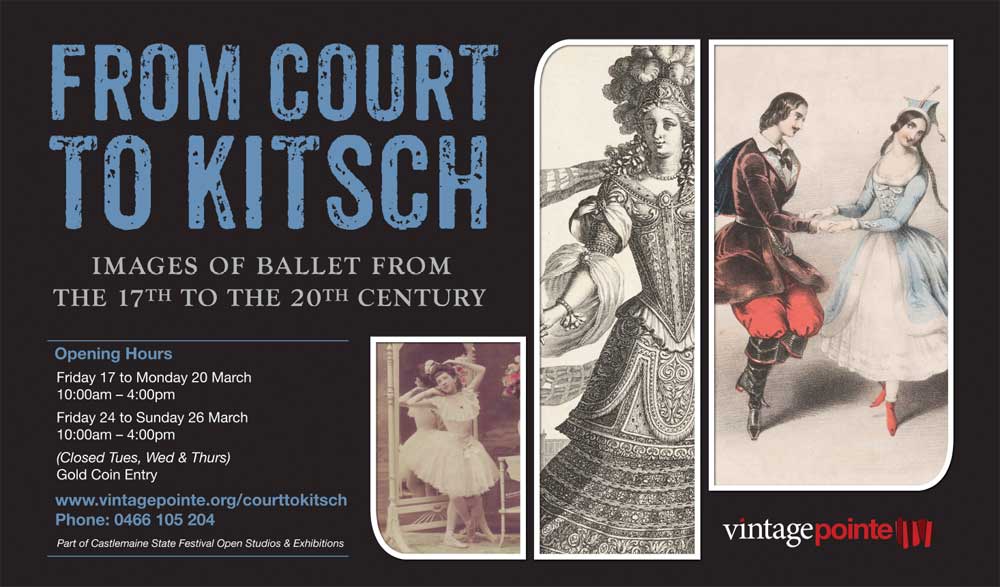Festival Interview for ‘Court to Kitsch’
Caitlyn is the curator of ‘From Court to Kitsch: Images of Ballet from the 17th to 20th Century’, which is part of the Castlemaine State Festival Open Studios program.
Where did you grow up? How did it shape you into becoming a ballet historian?
I grew up in Mount Gambier, SA, where I distinctly remember the public library being located beneath the Sir Robert Helpmann Theatre in the town’s civic precinct. I like to imagine that’s how I’ve ended up a cultural historian with a penchant for ballet – all those magical childhood visits to the library with the spirit of Robert Helpmann hovering overhead. He was an incredibly dramatic dance artist. That face, those eyes…
Did you chose your art subject or did it choose you?
Ballet was always a loitering presence in my life through videos and trips to the theatre. But after I rashly made it the focus of my postgraduate research, there was no going back.
What attracts you to your subject matter?
Ballet is a mass of fascinating ambiguities. In ballet, concepts of women’s strength and weakness are always fluid. It has been esteemed as morally instructive, reviled as morally corrupting, and passed over as amoral by others! Right now, ballet suffers and benefits through its association with princess culture. Yes, all those starry-eyed little girls represent ticket sales, but it also fosters expectations that ballet will be frothy, glamorous and, above all, safe.
What is art for you, what does it do for you?
Most of the images in the exhibition were not created as ‘art’ but as decorative mementos, visual reportage and consumer goods. But ballet itself? Great ballet, like all great art, is transportive, emotionally and intellectually. Great ballet blurs the sensations of sound and sight. Those rare, extraordinary performances are the reason I stick with this beautiful, maddening art form.
What’s in store for you in 2017?
Right after the exhibition I’m packing my bags for a dance symposium in Oxford. I’m giving a paper on ballet at Astley’s circus in the 1780s. Think dancing on horseback alongside tumblers, bee swarm wranglers, fireworks and General Jackoo, the Pig of Knowledge…
What is it that informs your work and how is it expressed through your collecting?
Curiosity. Ballet has a rich, cosmopolitan history, yet in terms of research, we’ve barely scratched the surface. I love stumbling over really obscure images and slowly discovering what they’re about.
Who is your favourite painter for ballet?
So many people love Degas’ paintings, but it’s the modernist opulence of Leon Bakst’s sets and costumes for Diaghilev’s Ballets Russes that fire my imagination. On paper, his set designs are the most extraordinary chromatic idylls.
What shapes your collecting?
Many of the items reflect research that I’ve done for myself or on commission. Generally I focus on dance between 1700 and 1900, so that’s reflected by the collection.
How would you like people to view and interact with your exhibited works?
Look, then look a little closer. Many of the images are finely detailed. Some may feel quiet and remote, until story behind them becomes clearer. And fear not the tyranny of the tutu—tutus there will be, but also visions of ballet as you might not have imagined it.
Are you an Alumni of Festival partner La Trobe University?
Yes, of Arts Humanities LTU, although I’m a postgraduate alumni of the University of Melbourne.
You can see more about ‘From Court to Kitsch’ here.

